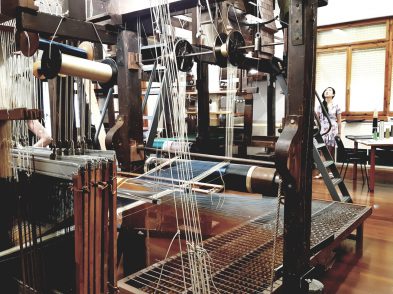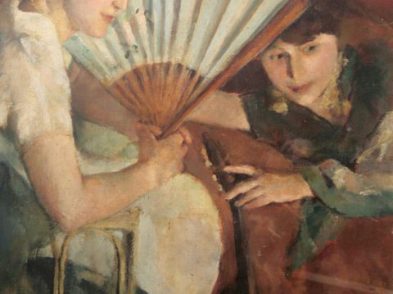When I first met glass designer Ita Barbini several years ago at her Venetian studio, I was fascinated to learn more about the mysterious art of glass making. A 30-year career teaching the art of glass at Venice’s Istituto d’Arte, days on end at the furnace following each step of the production process and a lifetime marked by the traditions of a glassmaking family make Ita Barbini a fascinating artist, who proves that creativity is best matched with an intimate knowledge of the medium. From October 6 to 26, the much loved Florentine sculptor Amalia Ciardi Duprè will be welcoming Ita to the Amalia Ciardi museum on via degli Artisti for a co-exhibition that engenders conversation between the art of the two women.
Jane Fortune: How would you describe your sculptures?
Ita Barbini: My pieces are inspired by nature, but they are also made to reflect human limitations and potential. It’s certainly conceivable to create enormous works using technological methods, but my sculptures are designed with the glass master’s gestures in mind, because I know which movements he can make with his body and their ultimate result. Traditionally, Muranese glass has always been made to the measure of man. My sculptures reflect that idea… I don’t design anything larger than the span of the artisan’s arms. For me, design is not a question of free-flowing inspiration. It’s about calculating a master’s movements in advance. It’s about knowing what he can ultimately achieve. Glassmaking is a dance. Being a glass designer is very much like being a choreographer.
JF: This October, you’ll be exhibiting in Florence at the Amalia Ciardi Dupre Museum. AWA restored Amalia’s works at the Museo Novecento and we’re so happy to see you working together. How do your abstract pieces fit alongside Amalia’s more figurative sculptures?
IB: Amalia often works in terracotta. Her works are born from the earth. Glass, you might say, is a more “airy” element. But we have fire in common! Many of her figurative sculptures have a real softness to them—that same sense of harmony I strive for. She often focuses on figures, and her art is a window onto the human soul. I am more drawn to nature, but since humans are a part of nature, I believe our works can stand side by side, in dialog.
JF: What made you interested in the art of glass?
IB: I’m linked to glass because of my very nature, by family tradition, by birth. I’ve always been surrounded by it and it has always been my world. As an artist, it never even occurred to me to consider any other medium. Its transparency, its malleability… it never stops being intriguing.
JF: Why has glassmaking traditionally been a man’s world?
IB: That’s true. No woman has ever worked glass in Italy at the master level. Nowadays, some women, particularly foreign women, train to create smaller objects, or they express themselves in a second stage of production, through glass decoration. It has always been a man’s field because of the physical strength needed to work glass. Just to lift the blowpipe—much less command it with precision—requires Herculean strength. And in any case, women were considered too fragile to work by the heat of the furnaces. In the 1970s, I was one of the first women to take a hands-on course and reach the “serventin” level. As a teacher of the art of glass I wanted to understand the medium hands-on. Being a “servant” is the first of many, many steps. Traditionally, glassworkers would begin training at eight years old and not become a maestro until late in life.
JF: What should our readers keep in mind while visiting your exhibition?
IB: To look at the pieces close up! That’s the invitation inherent in each sculpture. Glass intimidates some people and they aren’t aware of how warm it can be. Only if you come in closer will you be able to see the etchings, the enamel work, of how a certain piece was sanded. I prefer soft colors, and often use different shades of the same color when etching—dark gray on black, white on crystal, for example. I am not one for striking contrasts. Harmony is all about seeing the nuances—in art and in life!
The Harmony of Glass.
Ita Barbini.
October 7 to 26, 2016
Museo Amalia Ciardi Dupre,
via degli Artisti 53R, Florence
10.30am–12.30pm 4–6pm
Free admission
Inauguration: October 6, 6pm
To attend the inauguration, RSVP to info@amaliaciardidupre.org









